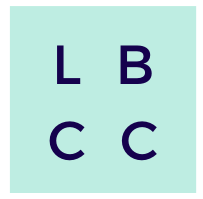A Cover Letter Writing Process You Can Count On
Don’t panic. You can handle this. I know writing a cover letter can be stressful and annoying because, yes, you have to write one for each job you apply for. Not only that, it should be different than the other cover letters you have previously written. Don’t worry! It will be ok. Each cover letter has to be unique because each employer and job you are applying for are different. For those of you who have older siblings, remember when your parents would give you hand-me-down clothes? Chances are, you hated it. Don’t make an employer despise your cover letter because it is akin to an old t-shirt with a chocolate ice cream stain on the front. In this blog, I will provide you with an outline to use for your cover letter. Although your letters will be different, your writing process will be the same.
Intro Paragraph
This paragraph should include three or four items. First, you should outline the title of the job you are applying for and the name of  company. Second, you should “name drop” if you have an inside track. If someone referred you to this job, now is the time to let the reader know how you are connected to the company. Make sure the person you are referencing is well known in the company, so the reader doesn’t get to this point and remark, “who?” There’s a possibility that the readers would then move your application to the “no” pile. If you do not have a direct connection, that’s fine too. Just skip this step. Third, explain why you are interested in this specific job at this specific company. Go a little deeper than stating that it is your dream to work for the number one hospital in the country. Isn’t that everyone’s dream? Be more unique and explain how this job ties into your personal and professional goals, values, and/or interests. Lastly, explain why you are qualified for this position. That will lead you into your next paragraph(s).
company. Second, you should “name drop” if you have an inside track. If someone referred you to this job, now is the time to let the reader know how you are connected to the company. Make sure the person you are referencing is well known in the company, so the reader doesn’t get to this point and remark, “who?” There’s a possibility that the readers would then move your application to the “no” pile. If you do not have a direct connection, that’s fine too. Just skip this step. Third, explain why you are interested in this specific job at this specific company. Go a little deeper than stating that it is your dream to work for the number one hospital in the country. Isn’t that everyone’s dream? Be more unique and explain how this job ties into your personal and professional goals, values, and/or interests. Lastly, explain why you are qualified for this position. That will lead you into your next paragraph(s).
Middle Paragraph(s)
A cover letter should not exceed one page and it should be three to five paragraphs depending on the number of experiences you would like to write about. Your middle paragraphs afford you the opportunity to elaborate on why you are qualified for the job. Be careful. Avoid the urge to regurgitate your resume. Instead, use these paragraphs more strategically. After looking at the job description, researching the company, and networking (if you are able), identify the employer’s needs and highlight how you satisfy these needs based on your previous professional experiences. From there, provide examples from your past that prove you have the skills needed to get the job done. Use the middle paragraphs to go into more detail than your resume can provide. Explain how you used your skills, strengths, and interests to help your previous employer thrive. This will help your new employer easily connect the dots and see how you will be successful in this position too.
Last Paragraph
Your last paragraph should be short, sweet, and to the point. Restate your interest in the company and position, ask politely for an interview, and always end by saying thank you.
There you have it! You wrote a cover letter. Now you have a cover letter writing process that starts with the employer’s needs, outlines your qualifications, and explains how specifically you will help. Make sure you don’t stray too far from your phone. I feel a call for an interview is in your near future 😉.


